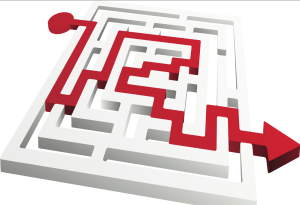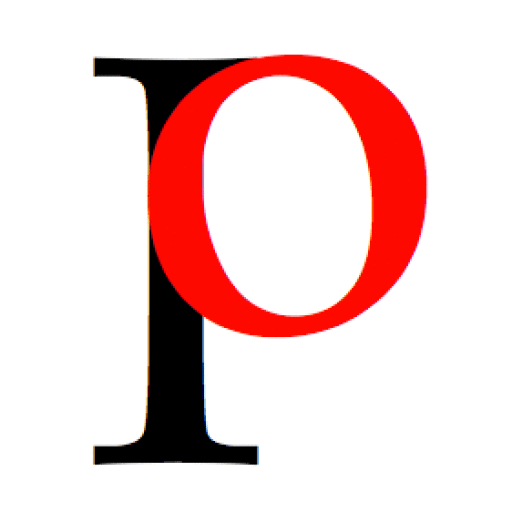A big open secret about Project Based Learning (PBL) is that it’s a great structure for designing  units of study. But many educators struggle with this understanding. It’s no wonder when you think about the concept of project carries so much historical baggage. As a student, I remember doing school projects that were fun and engaging, like book projects, where I got to tell other students about a novel that I enjoyed. Unfortunately, it had little relevance to my learning something new. Or the curriculum objectives could be better communicated. What if the project was teaching skills in understanding plot, characterization, and author’s craft? The end result could be a published review of the novel that addressed those 3 criteria, and the final product artifact could be a paper, multimedia report, or something else that is student generated. Now that’s something with substance.
units of study. But many educators struggle with this understanding. It’s no wonder when you think about the concept of project carries so much historical baggage. As a student, I remember doing school projects that were fun and engaging, like book projects, where I got to tell other students about a novel that I enjoyed. Unfortunately, it had little relevance to my learning something new. Or the curriculum objectives could be better communicated. What if the project was teaching skills in understanding plot, characterization, and author’s craft? The end result could be a published review of the novel that addressed those 3 criteria, and the final product artifact could be a paper, multimedia report, or something else that is student generated. Now that’s something with substance.
Yet many traditional projects–not all–started after the final test, when learning had already taken place. We might call them enrichment activities or as one teacher told me:
“My students and I worked very hard in the last unit. This project is a break for us, before we start on the next important unit.“
The value of traditional projects is that students get to demonstrate what they’ve learned from the unit where they–not the teacher–crafted their ideas into some product of their own design. One problem is that the project work was “extra”, after the completion of major assessments. Often they are assigned to be completed outside of class time. One has to ask, if little to no time is provided during school, how important is the work to what students need to learn? Homework might be assigned from the project. Such assignments are based on work done during the classroom time so that the work feels job embedded. PBL, unlike projects, embeds the work inside the instructional time so that it is job-embedded for students.
There is value in the process and experience for students and teachers alike. Teachers want students to be engaged in learning, participate fully, and develop the skills needed to be a successful and productive member of society. Students want schooling to be interesting, purposeful, and successful. These interests are not in opposition, yet the means to transform education that satisfies everyone remains a complex puzzle for many. PBL is one solution that meets everyone needs if we can come to a common understanding about what it is and how to start.
1. Have PBL become the Unit Structure
Make PBL the focus of the unit objectives, and students will link all the skills introduced to the final performance or presentation. Teachers can use any instructional strategies in their toolkit to guide learning. Those tools are used in context of PBL.
Which would students rather learn about:
- Show understanding of the geography themes as they pertain to the United States regions, such as physical features, culture, and economy. Write a report for your teacher. Or…
- Design a challenge race segment for a new cable pilot called Amazing Race US Edition. Contestants will need to participate in challenges that incorporate physical features, culture, and economy so that audiences and the participants learn about geography teams as they pertain to the locale. Create a multimedia pitch that includes a sample of the segment. Yours may be sent to the producers of Amazing Race.
Sometimes teachers express apprehension through wanting to wait on introducing the project until foundational knowledge is established through a series of lessons that may take 3 days to 2 weeks. The concern is that students can not do the project until such foundational knowledge and skills are developed. They are right about students being unable to complete the project without the instruction. No one expects students to design the final product on day one of a 2-5 week project. Think about projects given to adult workers. I remember being given the charge to provide Differentiated Instruction (DI) support to the 34 school districts in the county as needed. I had classroom experience with DI, but I researched the concepts and studied under some of the best in the DI world, Carol Tomlinson, Susan Allan, and Marcia Imbeau. I took my experiences and learning and crafted highly successful professional development for teachers in the county, and eventually nationally.
When PBL becomes the unit structure, it expands the possibilities for involving students into their own learning, by embedding strong communication, as the next understanding makes clear.
2. Communicate the project finale on the first day
 Students need to know on day one what will be expected by the end of the unit. This enables the teacher to connect each day’s lesson with the ending in mind. Helps students understand the connections of the skills and concepts in context with what they are crafting by the end of the unit. Students stop asking, “Why do we need to know this?” Or the teacher or students can answer that question because each lesson ties into the final product or performance. The conversation might sound like this…
Students need to know on day one what will be expected by the end of the unit. This enables the teacher to connect each day’s lesson with the ending in mind. Helps students understand the connections of the skills and concepts in context with what they are crafting by the end of the unit. Students stop asking, “Why do we need to know this?” Or the teacher or students can answer that question because each lesson ties into the final product or performance. The conversation might sound like this…
Student A: “Why do I have to research demographic data regarding ethnicity and cultural values in Michigan?”
Student B: “Because when design our Amazing Race segment we’ll need to build a challenge that teaches about that stuff. You know, recreation in the Grand Rapids area is different from Detroit, or the Upper Peninsula.”
Speaking for myself, I find productive meetings stake out clearly what are the outcomes that participants must accomplish. The agenda items breakdown steps that map a sensible approach to meeting the goals. At meetings where the objectives are fuzzy or not communicated effectively, the agenda steps seem without clear purpose, and one can feel like they are underwater trying to hold their breath for as long as they can. When a PBL unit introduces the project outcomes on the first day, and then proceeds to connect the dots each day back to the ultimate purpose, students get lost less. They have a road map by which to communicate with the teacher and other students for help and support.
3. Involve students in shaping the PBL experiences
Student voice is a powerful engagement tool that can lead to rich exploration of content that goes far deeper than when a teacher assigns the work. In a previous blog entry, Generating ideas for meaningful projects, I talk about how students can come up with their own unique way of  exploring and representing what they know when given the chance. Consider what makes a job fulfilling so that you look forward to going to work, and are willing to spend time “outside of work” thinking about the tasks or challenges?
exploring and representing what they know when given the chance. Consider what makes a job fulfilling so that you look forward to going to work, and are willing to spend time “outside of work” thinking about the tasks or challenges?
I like that relies on me to design a proposal or solution. When teachers provide clear academic criteria, students can run with the project, design a solution, and develop an artifact that demonstrates their understanding of the criteria. Students have ownership and find it challenging to figure out solutions or new proposals in collaboration and alone.
Students of all ages are the same. Given clear criteria of what the final product or performance must include, let them figure out what the want to do and how they will get it done. For the Amazing Race US Edition project, teams of students design their own race segment that incorporates challenges in formats that they conceive. So long as the academic criteria is represented, the students can design however they choose.
When PBL becomes the unit, teachers can still use the tools that they have found useful to supporting learning. Some of the tools may be used in different formats. For example:
- A lecture may be provided to a portion of the students who need it, while other students are working on related tasks.
- Formative assessments might include observational data collection or Exit Cards (5 minute non-graded questions at the end of a lesson).
Support becomes more easily provided because in a PBL unit students are pro-active and expected to do more of the heavy lifting around learning. Teachers provide strategic small group and individual support, in addition to traditional strategies such as lectures, whole class discussions, and individual desk work. If we want students to take ownership of their learning and be proactive, these PBL understandings make a difference. To be successful, teachers need to consider that when PBL becomes the unit, it meets the needs of students. How can we do more?

Trackbacks/Pingbacks